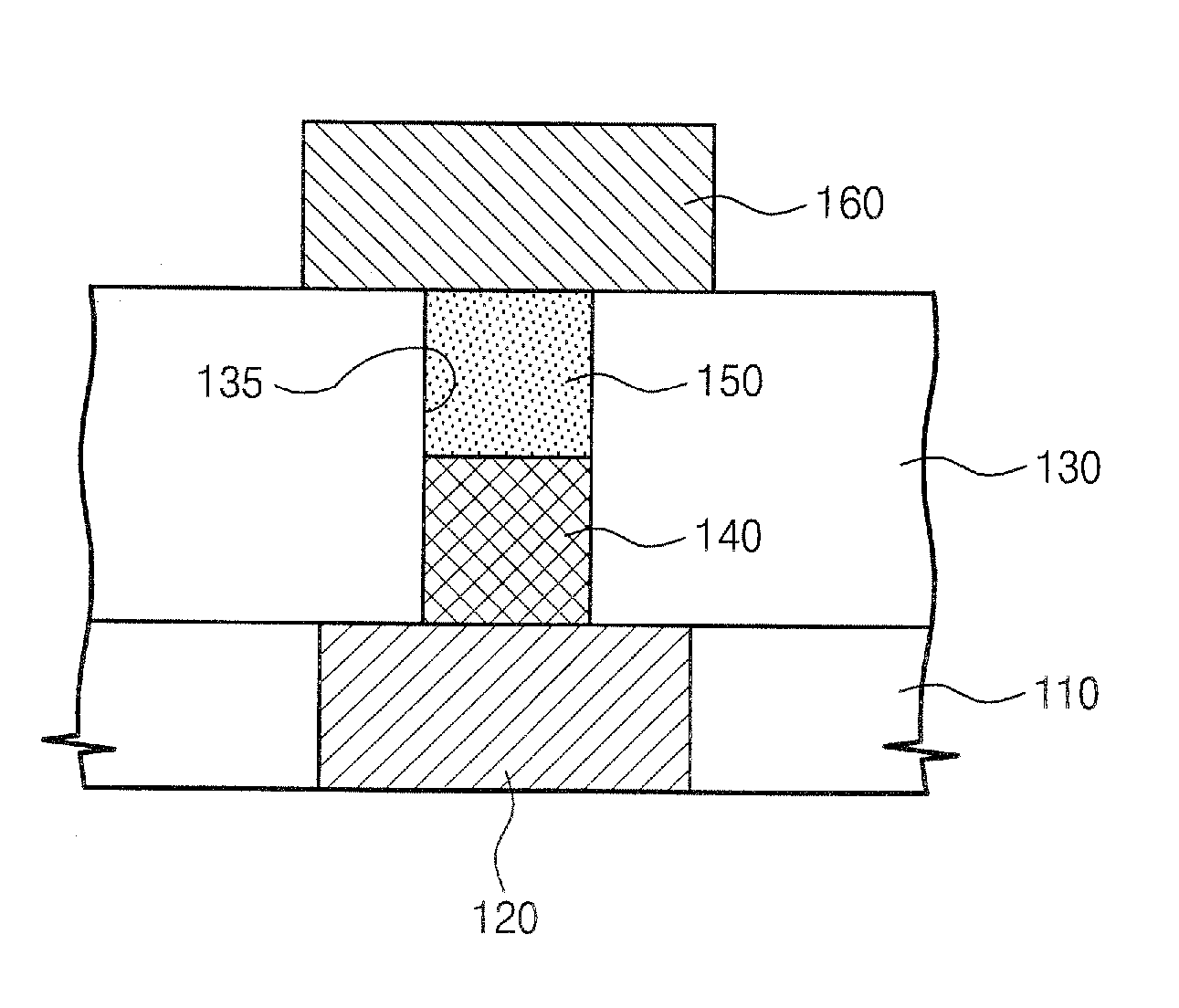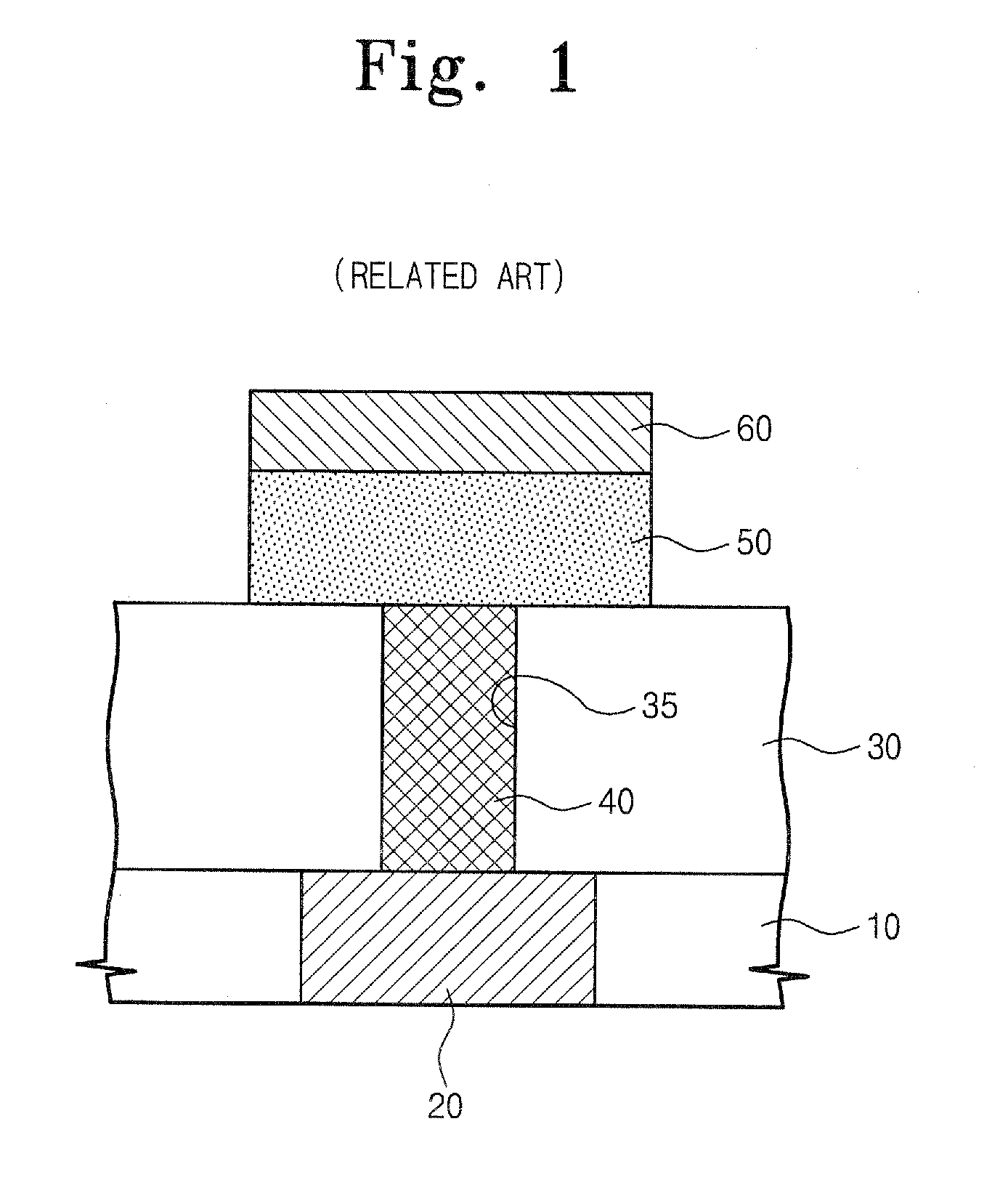Germanium compound, semiconductor device fabricated using the same, and methods of forming the same
a technology of germanium compound and semiconductor device, applied in germanium organic compound, organic chemistry, instruments, etc., can solve the problems of nonvolatile memory device retaining stored data, reducing the size of phase change material pattern, and losing data stored within volatile memory devi
- Summary
- Abstract
- Description
- Claims
- Application Information
AI Technical Summary
Benefits of technology
Problems solved by technology
Method used
Image
Examples
embodiment 1
[0043] In Embodiment 1, a germanium compound may be formed by first reacting about 3.5 moles of magnesium and about 3.1 moles of isopropyl bromine with each other in about 3 liters of ethyl ether for two hours and removing unreacted magnesium to provide an isopropyl bromomagnesium ((iso-C3H7)MgBr) solution. Tetra-chloro germanium (GeCl4) may then be added into the isopropyl bromomagnesium ((iso-C3H7)MgBr) solution and the tetra-chloro germanium (GeCl4) and the isopropyl bromomagnesium ((iso-C3H7)MgBr) may then be reacted with each other at a temperature of about 130° C. for about 12 hours. In one embodiment, the isopropyl bromomagnesium ((iso-C3H7)MgBr) solution may be refluxed with the tetra-chloro germanium (GeCl4) during the reaction. The reaction of the isopropyl bromomagnesium ((iso-C3H7)MgBr) and the tetra-chloro germanium (GeCl4) may be expressed by the following reaction formula 3.
GeCl4+(iso-C3H7)MgBr→Ge(iso-C3H7)Cl3+MgBrCl (reaction formula 3)
[0044] The solution generat...
embodiment 2
[0047]FIG. 6 is a timing diagram to illustrate a method of forming a phase change material layer according to one embodiment.
[0048] Referring to FIG. 6, a Ge precursor, a Sb precursor and a Te precursor are provided on a substrate. The germanium compound (for example, Ge(iso-C3H7)(N(C2H5)(CH3))3) described above with respect to Embodiment 1 may be used as the Ge precursor, tri iso-propyl antimony (Sb(C3H7)3) may be used as the Sb precursor, and tert-butyl tellurium (Te(C4H9)2) may be used as the Te precursor.
[0049] In one embodiment, a first source material containing the Ge and Te precursors and a second source material containing the Sb and Te precursors may be alternately and repeatedly supplied to perform a chemical vapor deposition (CVD) process. Each of the first and second source materials may be supplied for about one second. A purge gas may be supplied during the CVD process. The purge gas may include, for example, argon (Ar) gas and hydrogen (H) gas. The CVD process may ...
PUM
| Property | Measurement | Unit |
|---|---|---|
| width | aaaaa | aaaaa |
| temperature | aaaaa | aaaaa |
| temperature | aaaaa | aaaaa |
Abstract
Description
Claims
Application Information
 Login to View More
Login to View More - R&D
- Intellectual Property
- Life Sciences
- Materials
- Tech Scout
- Unparalleled Data Quality
- Higher Quality Content
- 60% Fewer Hallucinations
Browse by: Latest US Patents, China's latest patents, Technical Efficacy Thesaurus, Application Domain, Technology Topic, Popular Technical Reports.
© 2025 PatSnap. All rights reserved.Legal|Privacy policy|Modern Slavery Act Transparency Statement|Sitemap|About US| Contact US: help@patsnap.com



